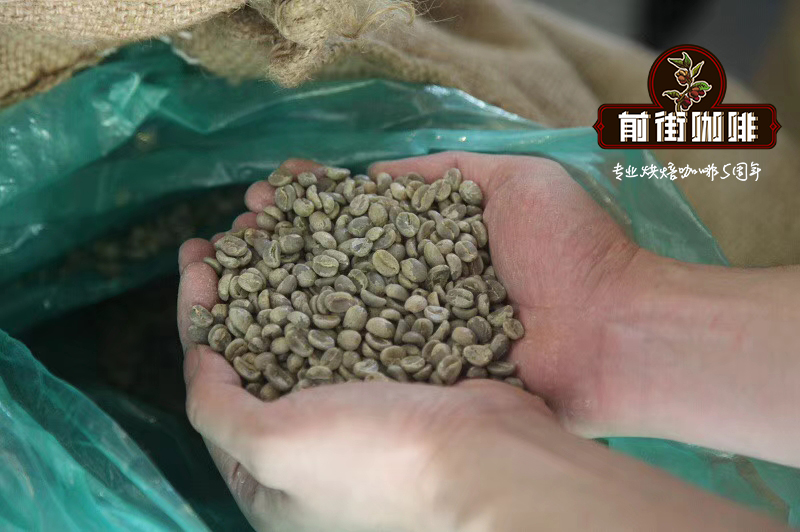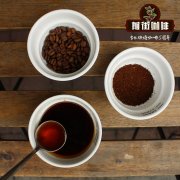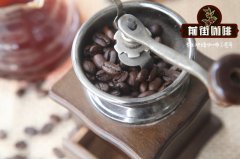How do you drink Brazilian coffee beans? Are Brazilian coffee beans expensive? What is the cost of Brazilian coffee?

Professional coffee knowledge exchange more coffee bean information please follow the coffee workshop (Wechat official account cafe_style)
Brazilian pectin sun-dried coffee beans
When it comes to solarization, the most widely used is Brazil; the disadvantage of solarization is that it is easy to mix defective beans, and the appearance between beans and beans is poor.
Dry treatment (secado), also known as natural all-day exposure (natural).
The sun drying method is one of the treatment methods of coffee fruit, which is that the coffee cherries are exposed to the sun for 3-4 weeks after harvest, and turn evenly several times a day, so that the coffee cherries are uniformly heated, and the core and skin of the coffee fruit will be separated after dryness. Then the pulp and peel are removed by a shelling machine, and the screening is completed.
There are two methods of fermentation, namely wet hair alcohol and dry hair alcohol, as the name implies, the former adds water, the latter does not add water. In the process of producing alcohol, the seeds and internal pulp will have special changes, which is one of the steps that most affect the flavor of coffee after washing, at this time, the coffee beans are still wrapped in the pericarp, the moisture content is up to 50%, and must be dried. Reduce the moisture content to 12%, otherwise they will continue to be mellow, moldy and rotten. The better treatment is to use sunlight to dry, although it will take 1-3 weeks, but the flavor is very good and very popular. In addition, machine drying is used in some places, which greatly shortens the processing time and makes the flavor inferior to that of sun-dried coffee.
Brazilian coffee bean fields are endless, mostly harvested by machinery, in order to meet the economic benefits. When 75% of the coffee fruit in the coffee garden turns red, mechanical harvesting is started, followed by the same pre-washing operation, which is moved into the sink to remove floating beans, sift out the sunken beans, and then use a large pulp screening machine to dig out the pulp and remove the pods covered with pectin. The next stage is separate from the washing method: the sticky pods do not need to be moved into the tank to ferment, but to the outdoor bean drying farm. Because of the dry climate in Brazil, the sticky pectin on the pods will harden in about a day or so.
Then use a large number of manpower to turn up and down, so that the pods dry evenly inside and outside, so as not to return to moisture and stink. For about two to three days, with the help of the natural forces of sunlight and dry climate, the pods can achieve a certain degree of dehydration. Then further dry with a dryer, the water content is reduced to 10.5%, and the pods are stored in a special container for about 10 days to further mature, in order to stabilize the quality, remove sheep skins (pods) before export, remove coffee beans, and pack them in stages. The adhesion of the mucous membrane is very strong and is not easy to remove. It must be placed in the slot for about 18-36 hours to make it alcohol and decompose the mucous membrane.
After the coffee fruit is actually picked, it is dried directly in the sun. According to the weather conditions, it is generally necessary to dry the coffee beans for 2 weeks to reduce the water content of the coffee beans to 10%, 12%, and then use a machine to remove the dried peel and pulp. Raw bean processing plants (beneficio) usually retain the parchment shell (parchment; pergamino) on the outside of coffee beans when they are stored and are not removed until they are exported (Costa Rican law stipulates that raw coffee beans cannot be exported with parchment shells). This kind of treatment generally requires sufficient sunshine in the place of origin.
Cooking reference: [volcanic flushing]
For hand-washed Brazilian coffee beans, it is recommended that 18g powder, 90 degrees water temperature, water powder ratio 1:15, small Fuji grind degree 4.5pm v60 filter cup, the first injection of 30g water for 28s steaming, continuous water in the middle, slow injection until 300g water, not in the end, extraction time 2:20s-2:30s.
Brazilian coffee bean brand recommendation
Brazilian coffee beans baked on Qianjie Coffee are fully guaranteed in terms of brand and quality. More importantly, the performance-to-price ratio is extremely high, a box of 227 grams, the price is only 45 yuan. According to the calculation of 15 grams of powder per cup of coffee, a bag of coffee can make 15 cups of coffee, which costs only about 3 yuan per cup, which is recommended by conscience compared to the price sold in cafes for dozens of yuan a cup.
Important Notice :
前街咖啡 FrontStreet Coffee has moved to new addredd:
FrontStreet Coffee Address: 315,Donghua East Road,GuangZhou
Tel:020 38364473
- Prev

Brazilian coffee bean brand recommends Brazilian coffee bean wholesale price list how much is a cup of Brazilian coffee
Professional coffee knowledge exchange more information about coffee beans Please follow the coffee workshop (official Wechat account cafe_style) mention the origin of coffee, the first thing people think of is Brazil in South America, because it is the largest coffee producer in the world. There are many kinds of coffee beans in Brazil. The vast majority of Brazilian coffee beans are unwashed and dried, according to the name of the state of origin and the port of transport.
- Next

Price list of Brazilian boutique coffee beans how much is a cup of Brazilian coffee in a cafe
For more information about coffee beans, please follow the coffee workshop (Wechat official account cafe_style) [introduction to the Brazilian Coffee Bean Manor]: this coffee comes from FazendaRainha (Queen's Manor), which covers an area of 280mu and is located in Vale da Grama, an ancient volcanic valley in Brazil. In 2011, the manor won the championship in the COE competition in Brazil. Queen
Related
- Detailed explanation of Jadeite planting Land in Panamanian Jadeite Manor introduction to the grading system of Jadeite competitive bidding, Red bid, Green bid and Rose Summer
- Story of Coffee planting in Brenka region of Costa Rica Stonehenge Manor anaerobic heavy honey treatment of flavor mouth
- What's on the barrel of Blue Mountain Coffee beans?
- Can American coffee also pull flowers? How to use hot American style to pull out a good-looking pattern?
- Can you make a cold extract with coffee beans? What is the right proportion for cold-extracted coffee formula?
- Indonesian PWN Gold Mandrine Coffee Origin Features Flavor How to Chong? Mandolin coffee is American.
- A brief introduction to the flavor characteristics of Brazilian yellow bourbon coffee beans
- What is the effect of different water quality on the flavor of cold-extracted coffee? What kind of water is best for brewing coffee?
- Why do you think of Rose Summer whenever you mention Panamanian coffee?
- Introduction to the characteristics of authentic blue mountain coffee bean producing areas? What is the CIB Coffee Authority in Jamaica?

